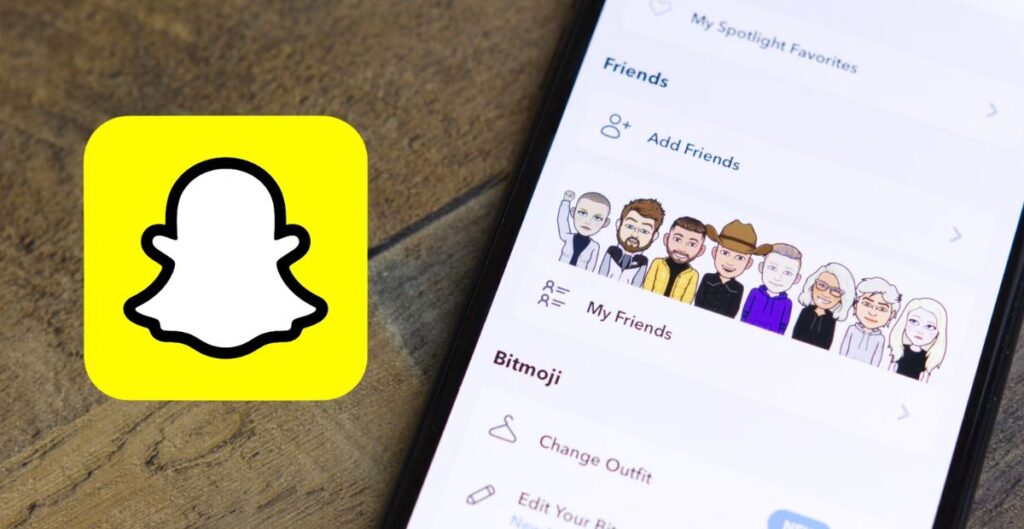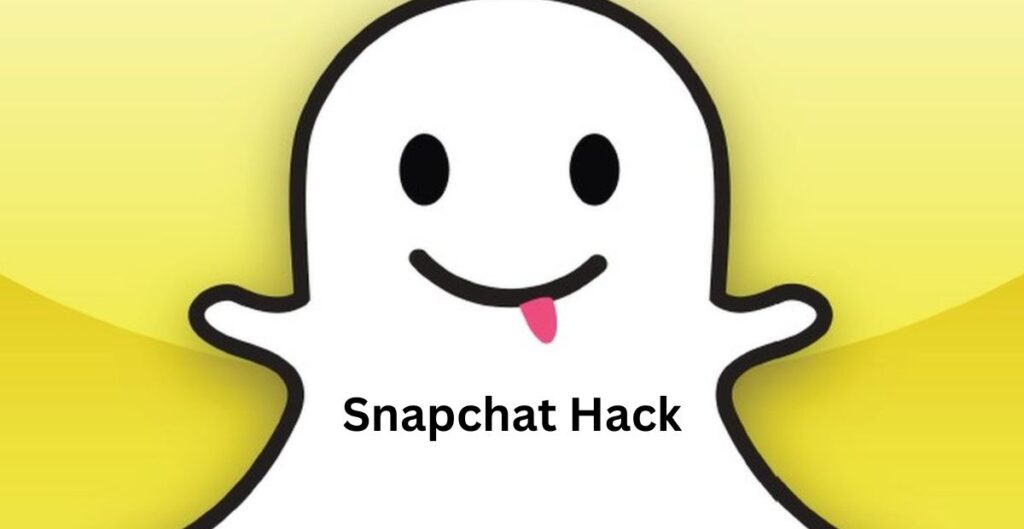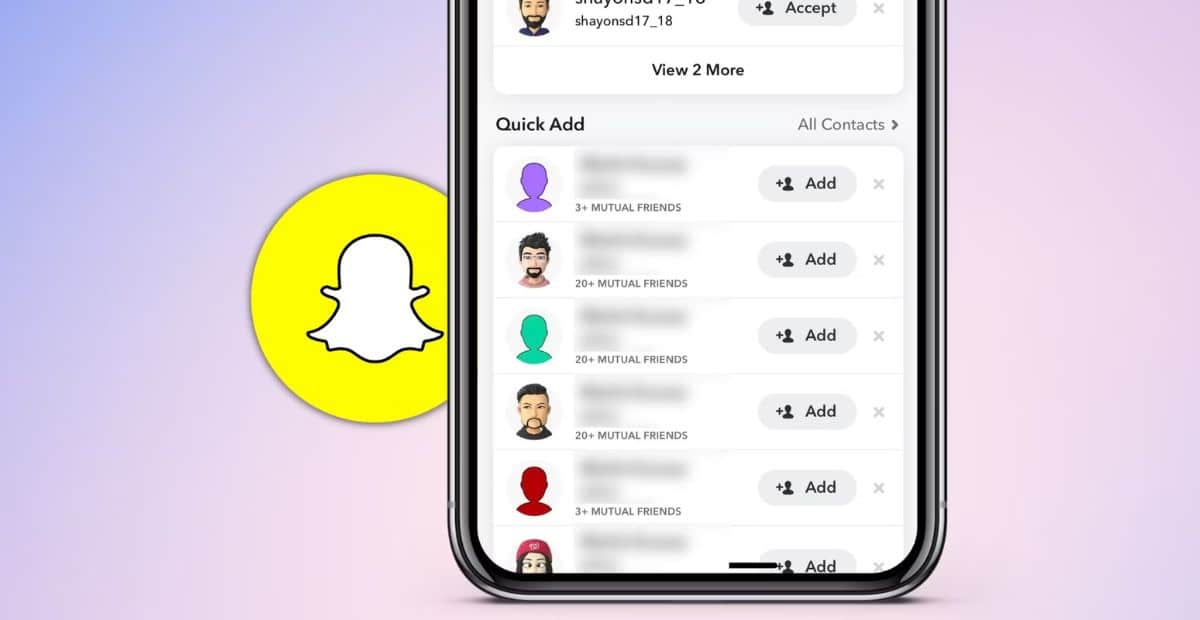Snapchat has become one of the most popular social media platforms, especially among younger demographics who love sharing ephemeral photos and videos. With over 300 million daily active users, Snapchat hosts a ton of personal content. This makes Snapchat accounts a prime target for hackers.
But can someone actually hack your Snapchat simply by adding you as a friend?
While accepting a friend request alone does not give someone access to hack your account, it does open up potential risks of phishing attempts and social engineering ploys aimed at gaining your login credentials. Understanding exactly how friending unknown accounts on Snapchat can jeopardize your security and privacy is key to protecting yourself.
Can Someone Hack Your Snapchat By Just Adding You?
The short answer is no. Merely accepting a friend request on Snapchat does not provide the ability for that user to directly hack your snapchat account.
However, by adding strangers, you grant them certain access that skilled hackers can exploit as a starting point for social engineering attacks designed to fool you into giving up your username and password.
So while a random friend request itself poses no hacking threat, accepting one from a suspicious account gives them footing to try tricking you into compromising your own security through psychological manipulation.
Once you add someone on Snapchat, here is what capabilities they gain that could potentially be abused maliciously:
- View and react to public Stories you post
- Send you direct Snaps and Chats
- Access your profile information and Bitmoji avatar
- See your Snap Map location if you have it set to be viewable by all friends
- Start building a fake Snapchat friendship with you
None of these powers granted through friending give access directly into your account. However, they provide the necessary tools for shady accounts to socially engineer their way into getting your credentials.
What Happens When You Add Just Anyone on Snapchat?

Simply adding someone new as a friend on Snapchat opens up more limited account access compared to full login credentials. But in the wrong hands, even the following friend privileges can be manipulated to compromise your security:
They Can View and Respond to Your Public Stories
Any user you accept a friend request from gains the ability to view any public Stories you post on Snapchat. They can also react to your Stories with Snaps or direct messages.
While this may seem harmless, it provides an avenue for potential phishing attempts disguised as friendly interactions. Once a hacker has inside friend access, they can build familiarity responding to your Stories before targeting your login info.
They Can Direct Message You
Accepting a friend request lets that user send you direct Snaps as well as text, video, and audio Chats at any time. This messaging access is the main line hackers leverage for phishing attacks and social engineering.
Through direct messaging, hackers posing as friends try to build trust and rapport with victims. This allows them to carry out social engineering scams aimed at stealing login credentials or downloading malware onto your device.
They Can Access Your Profile and Bitmoji Info
Any approved friend on Snapchat can view your public profile details including your username, display name, Bitmoji avatar, Snapcode, trophy score, and any other info you set to be visible.
While not sensitive, this profile access helps criminals gather intel on targets and build convincing fake friend personas and stories. Impersonating known contacts is a common social engineering tactic.
They Can View Your Snap Map if Public
The optional Snapchat Map lets you share your real-time location with friends. If you choose the setting for all friends to see your Map location, any new friend additions will also gain this access.
In extreme cases, this location data could be abused by stalkers or thieves. But more likely, it gives hackers another data point to create a tailored social engineering strategy.
It Opens Up Potential for Social Engineering
Arguably most importantly from a hacking standpoint, accepting a friend request from a suspicious account opens the door for them to psychologically manipulate you. This social engineering vulnerability is what hackers aim to exploit.
By developing an apparently legitimate Snapchat friendship with ongoing messaging, criminals gain your trust and credibility. Once considered a “friend,” you are much more likely to fall for phishing scams and fake links sent from that account.
The human tendency to let guard down around friends is precisely what hackers take advantage of when targeting your account.
Friend Request Vulnerability
A common first step hackers employ is using bots or fake accounts to send out a barrage of friend requests on Snapchat and other social media sites. Their goal is to get as many random users as possible to accept these requests.
For each user that adds one of these accounts back, the hacker then has a potential avenue to execute social engineering attacks through the newly opened messaging channels.
These fake accounts often impersonate real friends, celebrities, influencers, or bots offering funny filters or content. Once a user accepts the friend request, the criminal uses the perceived friendship to send phishing messages and malicious links that appear legitimate since they seem to come from a “friend.”
The more friend requests on Snapchat or follow requests on Instagram that users blindly accept from unverified accounts, the more opportunity it opens for hackers to socially engineer access to accounts.
Social Engineering Risks

Also referred to as “human hacking,” social engineering is the practice of psychologically manipulating people into handing over sensitive personal data. Playing on human emotions and tendencies, criminals posing as trusted friends or associates build close rapport with victims before targeting login credentials or financial data.
On Snapchat, hackers use the instant messaging capabilities unlocked through friend connections to carry out social engineering cons aimed at stealing account access.
A common scheme involves an attacker starting casual conversations and developing an apparently caring friendship with the target user. They might message daily, send Snaps back and forth, react to Stories, and deepen the illusion of a real friendship.
Once the victim considers the account to be a trusted friend, they are much more likely to click on links the hacker sends without thinking them suspicious. Hackers leverage the innate human desire for social connection to lower defenses.
Through Snapchat messaging, hackers can fool unsuspecting users into handing over their username and password. They may send “official” links to fake Snapchat password reset pages that capture any credentials entered.
Social engineering uses human psychology instead of software exploits to gain illicit access. On Snapchat, a hacked friendship is often the first step for attackers in these cons.
Third-Party App Dangers
In addition to phishing and manipulation through direct messaging, some hackers distribute third-party apps that claim to enhance Snapchat with special capabilities like filters, saving stories, screenshot prevention, and other bonuses.
However, the vast majority of these apps promising exclusive Snapchat features are not legitimate. Often developed by hackers themselves, the real intent is to steal user credentials once installed.
For example, a third-party app may claim to let you save Snapchat Stories that normally would disappear after viewing. But when you install it, the app requires inputting your Snapchat username and password to function.
These credentials are then stolen by the hackers who created the app. They can even program it to log into accounts automatically and take control. Third-party apps are a common vector for stealing social media credentials.
It is highly risky to ever provide your Snapchat login information to any third-party app or site outside of the official Snapchat platforms. Only install apps directly sourced from the Snapchat website or official iOS and Android app stores.
Impersonation and Phishing
In addition to completely fabricated accounts, some hackers focus on impersonating real Snapchat users like friends, celebrities, influencers, and public figures. They may only modify a known username slightly to appear convincingly similar.
For example, if a celebrity has Snapchat username @john, a hacker might register @john1234 or @john_official. Or for your best friend @susie, they could mimic with @susie1. Minor modifications that seem plausible.
Once connected as an impersonated “friend,” the hacker engages naturally with the victim to build rapport and trust. After normal conversations and story interactions, they employ phishing techniques.
This often involves sending links to fake Snapchat password reset pages that capture any credentials entered by the victim. Since the link comes from a trusted “friend,” there is no suspicion of danger.
Impersonator accounts exploit the tendency people have to let their guard down around friends. Any content sent from an unknown account could contain malware or phishing scams, so wariness is key even if they seem like a friend.
Protecting Your Snapchat Account
While no security tactic can prevent hacking 100%, implementing smart practices goes a long way in locking down Snapchat:
- Carefully vet all friend requests – Never accept requests from unverified accounts, even if they appear to be friends. Double check account details before friending back. Many scams impersonate known contacts.
- Use strong, unique passwords – Have different complex passwords for every account. Consider a password manager app to track them. Never reuse passwords across multiple sites.
- Enable two-factor authentication – Add an extra security layer by enabling 2FA on your Snapchat account. This requires you to input a secondary code from your phone when logging in.
- Don’t click suspicious links – Regardless of source, scrutinize links sent through Snapchat carefully. Especially avoid clicking links from unknown accounts, as they commonly contain malware.
- Limit third-party app permissions – Be very cautious of any third-party apps requesting access to your Snapchat username and password. Avoid granting credentials to unverified platforms.
- Keep Snapchat app updated – Maintain the latest version of the Snapchat app on your device through the Play Store or App Store. Updates often contain critical security patches.
- Use antivirus software – Protect your device with comprehensive antivirus software to catch any phishing scams or malware before they compromise your phone. Perform regular scans.
With increasingly sophisticated phishing technology, it pays to be extra vigilant about security practices on Snapchat and any social media. While a random friend request alone should not cause alarm, accepting ones from suspicious accounts opens up risk of social engineering that hackers exploit. Stay cautious!
What Shows Your Snapchat Has Been Hacked?
If you are worried your Snapchat account may have been compromised by a hacker, there are various red flags to look for:
1. Unusual Account Activity
If Snaps or Chats are being sent from your account that you didn’t send yourself, it likely means a hacker has taken over your account and is actively using it. Strange new contacts, group memberships, and public posts you know you did not create are other signs of hacker activity.
2. Constantly Being Logged Out
If Snapchat repeatedly logs you out and forces you to re-enter your password to regain access, it most likely means the hacker changed your account password to lock you out. This is a common tactic used by hackers once they take over an account.
3. New Unknown Friends
Take a close look at your Snapchat friends list and see if any unfamiliar accounts have been added without your knowledge. Unrecognized profiles connected to you indicate a hacker added their own accounts while in control of your profile.
4. Account Details Changed
See if you received any password reset emails for your Snapchat account sent to an email address you don’t control. This means your personal account info like associated email and phone number was modified by the hacker to recover access.
5. Alerts About Unknown Logins
Snapchat itself will notify you through push alerts if someone logs into your account on a completely new device that you don’t own. This is a clear signal that another person has accessed your account remotely.
6. Display Name Changed
Check that your account’s display name (the name friends see) remains what you set it to. Hackers often change names to further eliminate traces of their activity after taking over an account.
7. Content Posted That Does Not Reflect Your Views
This is a more subtle red flag. If you see Stories, Snaps, or Chat messages posted from your account that contain views you do not hold or would never post, it likely means a hacker briefly hijacked your profile.
8. Deactivation or Lockout of Account
In some cases, hackers who take over an account will deactivate it, delete it, or purposefully trigger a suspension through policy violations. Being suddenly unable to access your account at all indicates it was compromised.
Being alert and watching for any of these signals can help alert you early if your account has actually been hacked. The sooner a compromise is spotted, the easier recovering your account will be.
How Do I Protect My Snapchat Account From Hackers?
Securing your account starts with smart daily habits:
1. Vet New Friends Carefully
Be extremely cautious of any new friend requests and do not accept ones from unverified strangers. Carefully check profiles of new requests to confirm they match real friends before accepting. Avoid adding accounts that impersonate friends.
2. Create a Strong, Unique Password
Your Snapchat password should be made as lengthy, random, and complex as possible. Using a combo of upper and lower case letters, numbers, and symbols makes them hardest to crack. Never reuse the same password on multiple accounts.
3. Enable Two-Factor Authentication
Two-factor authentication (2FA) adds a secondary layer of account login protection beyond just a password. Enable it in your Snapchat settings. 2FA requires you to enter a random 6-digit code from your phone when logging in on a new device. This prevents a hacker from accessing your account even if they know your password.
4. Beware of Suspicious Links and Attachments
Never open or download links, files, or media sent from unknown Snapchat accounts. These often contain malware or direct to convincing phishing sites aimed at capturing your login credentials as you try to log in.
5. Log Out of Public Computers
Don’t stay logged into your Snapchat account on any shared or public computers like at the library. Always log out of devices you don’t control to prevent access to your account.
6. Limit Third-Party App Permissions
Be extremely cautious when any app requests access to your Snapchat account as part of their service. Never enter your username and password unless certain the platform is completely legitimate. Most apps do not actually need your credentials.
7. Update Snapchat Frequently
Keep your Snapchat app up-to-date through the Play Store or App Store. The developers release constant security patches you should install to protect against newest hacking methods.
8. Run Antivirus Software
Maintain comprehensive antivirus software on your mobile device or computer to catch any potential malware or phishing scams sent through Snapchat before they can infect your system or trick you into inputting your password.
9. Avoid Public Wi-Fi
Only access Snapchat on protected Wi-Fi from your home or phone data plan. Open public Wi-Fi makes it easy for hackers to intercept your traffic and account information.
10. Monitor Your Account
Frequently check your Snapchat friends list, settings, and activity for any suspicious changes that could indicate compromise by hackers. Being alert to signs of account takeover means responding quicker to re-secure it.
Regularly implementing all smart security habits significantly reduces the chances of your Snapchat falling victim to hackers. While accepting an unknown friend invites alone won’t cause a direct hack, it opens up an attack surface. Stay cautious sharing your life online!
Can Snapchat Itself Get Hacked?

While individual Snapchat accounts do get targeted frequently, can hackers actually breach Snapchat’s central systems and servers?
The short answer is yes, Snapchat itself has suffered multiple significant cyberattacks over the years, exposing millions of users’ private data.
In one notorious case back in 2014, a hacker group leaked the personal phone numbers and usernames of up to 4.6 million Snapchat users in a searchable database.
This early breach exposed severe vulnerabilities in Snapchat’s systems. Since then, their security posture has matured drastically. But incidents still occasionally occur.
As recently as 2022, a cybercriminal claims to have scraped the personal data including emails and birthdates of over 5 million Snapchat users and posted it for sale on a hacker forum.
So while individual account hacks present the most common threat, Snapchat’s own corporate servers contain troves of user data that does attract hackers. As a precaution, avoid recycling the same username and password across multiple accounts, as exposed credentials can lead to account takeovers. Enabling two-factor authentication and promptly removing someone on Snapchat also mitigates this risk.
Overall, Snapchat has strengthened their infrastructure security over time. But any centralized database of millions of people’s information will entice criminals. Basic account security hygiene remains imperative.
Is It Possible to Retrieve Hacked Snapchat Accounts?
If your Snapchat does get successfully phished or hacked by an attacker, is it possible to recover the account and undo the damage?
The recovery prognosis depends on how quickly the compromise is identified as well as the extent of changes the hacker makes while inside the account. But in many cases, it is possible to fully restore a hacked Snapchat profile.
If caught early, the hacker likely will not have had time to change recovery emails, phone numbers, or passwords. Resetting via the password change page is often sufficient, as long as they have not added new device logins.
However, if the hacker has changed account details like the associated email address and phone number, the recovery process is more complex. You will need to follow Snapchat’s account compromise process.
This involves submitting proof of identity such as an ID photo or account creation date and waiting for their security team to review it. If sufficient evidence is provided, they can roll back unapproved changes and restore the account.
The quicker a Snapchat hack is identified, the simpler recovering the account will be. It is critical to watch for any unusual activity and contact Snapchat support as soon as any issues are spotted. Acting fast is key to regaining control and avoiding permanent damage or loss.
Final Thoughts
As Snapchat continues growing in popularity, particularly among teens and young adults sharing intimate life moments, Snapchat accounts will remain prime targets for hackers.
Gaining access to someone’s Snapchat provides visibility into their personal communications, photos, videos, locations, and more. This draws the interest of cybercriminals.
However, merely accepting a random friend request does not provide the ability to directly hack that user’s account. Additional social engineering through phishing and manipulation is required.
Nonetheless, it is smart to be very cautious adding new friends if you cannot completely verify their identity. Consider vetting new friend requests thoroughly before accepting.
Enable two-factor authentication for an added account security layer. Be wary of any suspicious links or content sent from unknown users. And create a strong unique password that would be difficult to crack.
With hackers growing more sophisticated, it is crucial to implement sound security habits on Snapchat and any social media accounts. Avoiding reusable passwords and staying updated on the latest phishing tactics goes a long way.
Be especially vigilant for any abnormal activity that could signal account compromise. If your Snapchat is hacked, act swiftly to contain the damage, alert Snapchat support, and recover your account.
Above all, maintaining awareness around social engineering-based hacking schemes will help keep your Snapchat account secure. Share intelligently and stay safe online.
People Also Ask (FAQ’s)
How can I protect my Snapchat account from being hacked?
- Enable two-factor authentication.
- Use a strong, unique password.
- Avoid sharing your account information or clicking on suspicious links.
What are the signs that my Snapchat account has been hacked?
- Unexplained changes in your account settings.
- Messages or posts that you didn’t send.
- Friends reporting unusual activity from your account.
Can adding unknown people on Snapchat increase the risk of hacking?
Yes, adding unknown people can increase the risk of social engineering attacks and account compromise.
Is two-factor authentication effective in preventing Snapchat hacks?
Yes, two-factor authentication adds an extra layer of security by requiring a second form of verification to access your account.
What should I do if I suspect that my Snapchat account has been hacked?
- Change your password immediately.
- Enable two-factor authentication if you haven’t already.
- Contact Snapchat support for further assistance.











